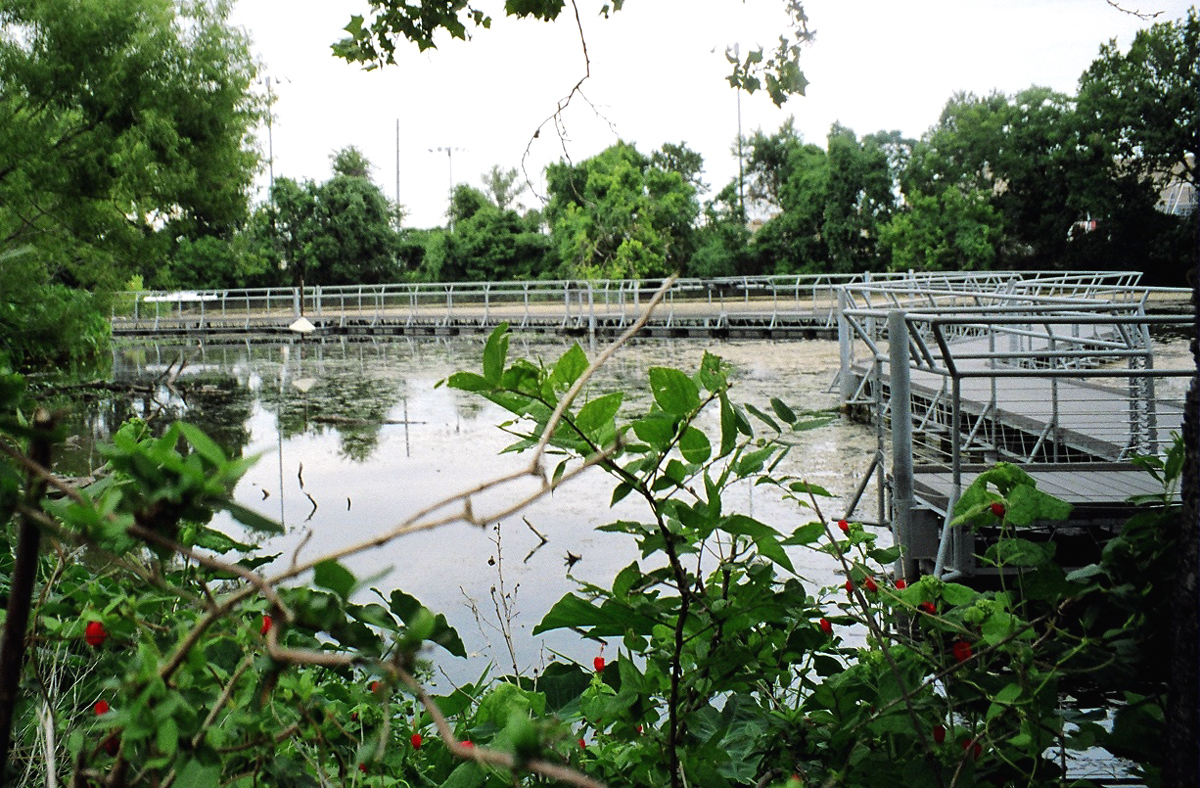- San Marcos Springs
Infobox Spring
spring_name=San Marcos Springs
caption=The Wetlands Boardwalk encircles Spring Lake at San Marcos Springs
type=Karst spring
location=San Marcos,Texas , U.S.A. [ [http://pubs.usgs.gov/fs/Fs05997/ USGS Fact Sheet 059-97] ]
source=Edwards Aquifer
provides=San Marcos River
flow=152 ft³/s (4300 L/s)
magnitude=1
elevation=570 ft (174 m) above sea levelSan Marcos Springs is the second largest natural cluster of springs in
Texas . The springs are located in the city ofSan Marcos, Texas , about 30 miles (48 km) southwest of Austin and 46 miles (74 km) northeast of San Antonio.Geology
The San Marcos Springs is an area of artesian outflow from the
Edwards Aquifer along the Balcones Escarpment. More than 200 springs flow from three large fissures and other smaller openings in the rock. The springs provide most of the water for theSan Marcos River , which flows southward from the springs' location.The springs have never been known to stop flowing. The average flow is 152 ft³/s (4,300 liters/s); the lowest recorded flow of 46 ft³/s (1,302 L/s) occurred in 1956. In 1854, German settlers built a dam just downstream from the springs; the resulting lake, known as Spring Lake, inundated the springs.
History
Archaeologists believe that the San Marcos Springs area may be the oldest continually inhabited site in North America. Excavations at this location uncovered Paleo Indian artifacts dating back as much as 12,000 years. The
Tonkawa farmed this area more than 800 years ago; they called the springs "Canocanayesatetlo" ("warm water"), a reference to the springs' relatively warm 72 °F (22 °C) year-round temperature.The first Europeans to see the springs were probably members of the Espinosa-Olivares-Aguirre expedition of 1709. Later, the Spanish mission San Xavier and the failed settlement of San Marcos de Neve were situated there.
White American s began settling the area in 1835, and the springs became a major stop on theChisholm Trail . From 1928 until 1996, a resort and amusement park known asAquarena Springs was located at the site.Texas State University-San Marcos purchased the surrounding area in 1994, and the site is now known as Aquarena Center.Endangered species
San Marcos Springs is home to several endangered species, including the
Fountain darter , theTexas Blind Salamander , theSan Marcos Salamander , theSan Marcos Gambusia , and Texas Wild Rice. Federal requirements to protect the species' environment, and the resulting demands those requirements place on water from the Edwards Aquifer, have led to several legal and political battles throughout the region.References
External links
* [http://www.edwardsaquifer.net/sanmarcos.html San Marcos Springs] at the Edwards Aquifer Website
* [http://www.tpwd.state.tx.us/learning/webcasts/rivers02/edwards_aquifer.phtml "Take Me To The River" webcast] from the Texas Parks and Wildlife Department
*
*
Wikimedia Foundation. 2010.
